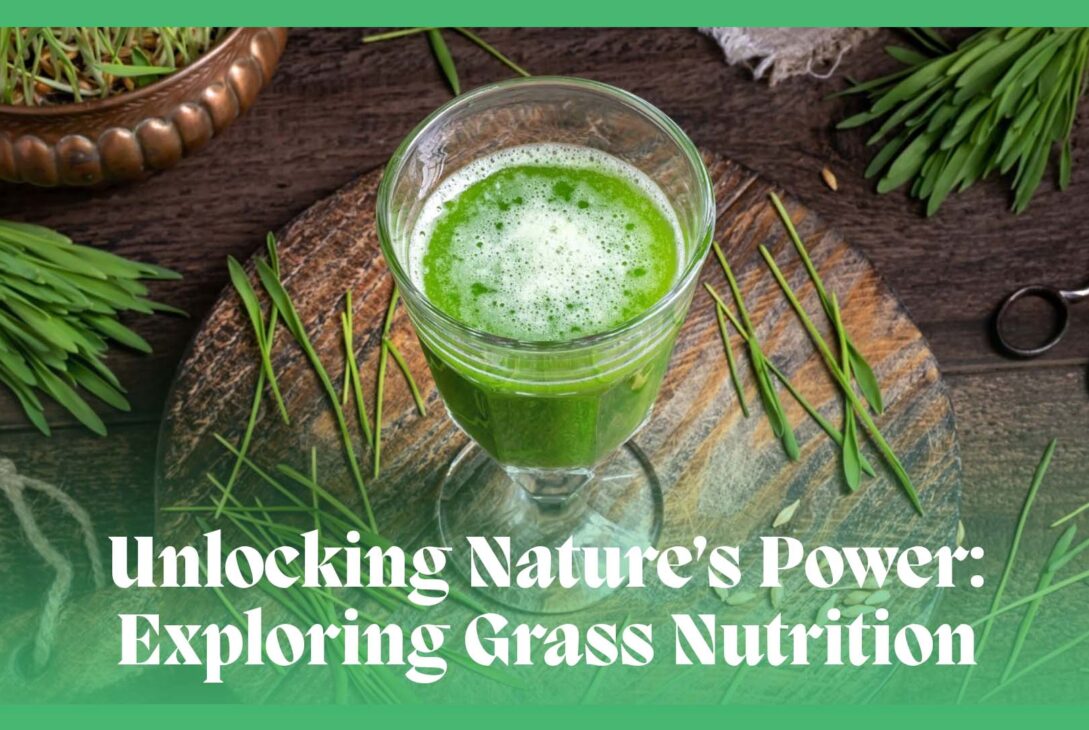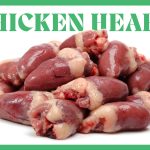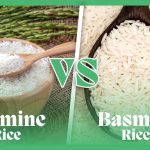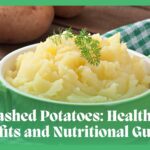Greetings from the verdant realm of grass nutrition, where the greenery directly under our feet contributes to the health of our environment and the food we eat. Beyond its visual attractiveness, the nourishment found in the grass can be smoothly incorporated into the human diet to unlock a range of health advantages. Grass, being a rich source of vital nutrients, is also a powerful source of vitamins, minerals, and antioxidants, which help to establish a strong and healthy environment.
We discover a wealth of health benefits when we explore the symbiotic interaction between the human diet and grass. There is a strong link between the bioavailability of nutrients and the harmonious dance of chlorophyll. Come along on this voyage of green enlightenment as we discuss the transformational power of grass nourishment and its tremendous significance for human well-being.
Now is the moment for everyone to embrace the green revolution!
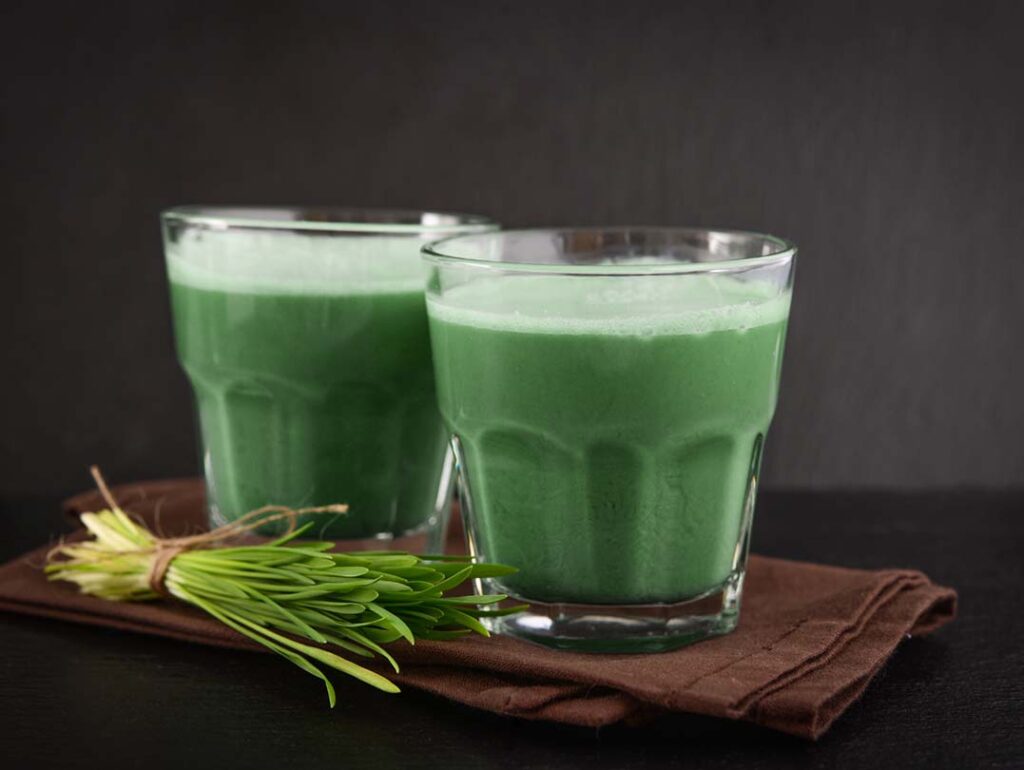
Nutritional Composition of Grass:
With a wealth of vital elements that support general health and well-being, grasses have a varied nutritional profile.
Macronutrients:
Discover the macronutrient symphony of the grass! Come along as we reveal the astounding dimensions of these little marvels that transform grass into a nutritious superpower.
Carbohydrates:
Carbohydrates are plentiful in grasses, mostly in the form of simple sugars, cellulose, and hemicellulose. Both the grass and the people who eat it can obtain energy sustainably from these carbs. Carbohydrates are found in large quantities in grasses, mostly as sugars, cellulose, and hemicellulose. Both dietary fiber and calories are provided by these complex carbs. The fiber content helps control blood sugar levels, supports a healthy gut microbiota, and facilitates digestion.
Proteins:
Proteins from grasses are abundant and include several important amino acids. These proteins are essential for immune system function, muscular growth, and the upkeep and repair of different body tissues. Grass contains a significant amount of protein and a variety of important amino acids that are vital to human health. Although the levels of proteins in grass differ among species, they are essential for immune system performance, muscular growth, and general cellular upkeep and repair.
Fats:
Grass is low in fat yet rich in important fatty acids, such as omega-3 and omega-6. These fats improve brain function, promote cardiovascular health, and help control the body’s inflammatory reactions. Despite not having a lot of fat in them, grasses do contain important fatty acids like omega-3 and omega-6. These fats are essential for maintaining brain function, cardiovascular health, and the control of the inflammatory response.
Micronutrients:
Uncover the micronutrient magic of grass and discover its hidden secrets! Let’s explore the rich world of grass and learn about the massive amount of nutrients it contains.
Vitamins:
Grasses are a great source of numerous vitamins, including A, C, E, and K, all of these are abundant in grasses and play significant roles, such as vitamin A, which supports skin and vision health; vitamin C, which is well-known for enhancing immunity; vitamin E, which is an antioxidant that supports cell protection; and vitamin K, which is essential for blood clotting. Grass’s high vitamin content highlights how they might supplement a person’s diet with vital micronutrients.
Minerals:
Grasses are a great way to get nutrients including potassium, phosphorus, magnesium, and calcium. These minerals are essential for maintaining healthy bones, nerves, muscles, and bodily fluid balance. Grass’s varied mineral makeup makes a substantial contribution to general health. Essential elements including calcium, magnesium, phosphorus, and potassium may be found in large amounts in grasses. These minerals are essential for sustaining bone health, promoting neuron function, facilitating the contraction of muscles, and controlling the body’s fluid balance.
Knowing the nutritional makeup of grasses highlights their potential as an organic supply of vital nutrients, which makes them an excellent complement to a diet that is both balanced and health-conscious. Including grasses in one’s diet can enhance nutritional variety in general and advance overall health.
Role in human nutrition:
Savor the delicious green deliciousness! Discover the amazing health advantages of grass and its pivotal role in sustaining human nutrition. This underappreciated green wonder can do anything from strengthening bones to supporting nerve function, giving you the keys to a well-fed and energetic existence!
Digestive Health:
Eating grass high in nutrients has a beneficial effect on digestive health. Constipation is lessened by the high fiber content, which includes cellulose and hemicellulose, which promote regular bowel motions. Studies on the benefits of dietary fiber on gut health emphasized the function that fiber plays in preserving the health of the digestive system. (1)
Immune System Support:
Grass rich in nutrients, with a variety of vitamins and minerals, supports a strong immune system. A study revealed the immunomodulatory properties of certain chemicals in grass, emphasizing their potential to strengthen the body’s defenses against illnesses and infections.
Antioxidant Properties:
Grasses possess well-known antioxidant qualities, which are mostly ascribed to vitamins A, C, and E. These antioxidants are essential for decreasing oxidative stress and neutralizing free radicals. The antioxidant capacity of grasses is explored in research published in the Journal of Agricultural and Food Chemistry, with a focus on how they may be able to prevent cellular damage and lower the risk of chronic illnesses. (2)
Improves bone health:
Minerals like calcium, magnesium, and phosphorus that are present in grass are essential for improving general health. Due to its ability to build bones, calcium is well known for helping to maintain strong skeletal structures and avoiding osteoporosis. Conversely, magnesium plays a critical role in neuron function by facilitating the release of neurotransmitters and facilitating seamless nerve cell-to-nerve cell transmission.
Furthermore, phosphorus strengthens the skeletal system and helps nerve impulses travel across the body, supporting both bone health and neuron function. Together, these minerals support the body’s fluid balance, which promotes healthy hydration and cellular activity. Research emphasizes the critical function that calcium and phosphorus, which are contained in the grass, play in bone health, hence highlighting their significance for general health. (3)
Supports immune system:
Wheatgrass and barley grass, two nutrient-rich grasses, are packed with vitamins A, C, E, and K, all of which have a major impact on different facets of health. To maintain and strengthen the immune system and assist the body fight off infections and diseases, vitamin A is vital for immunological support.
Improves skin health:
Renowned for its antioxidant qualities, vitamin C strengthens immunity by shielding cells from oxidative damage. It also encourages the manufacture of collagen, which supports healthy skin and increases resistance to environmental harm. As a strong antioxidant, vitamin E strengthens the skin’s defense against oxidative damage and boosts immunity. Although vitamin K is essential for blood clotting, its assistance for healthy skin is less well-known. (4)
Common Grass Varieties:
A wide range of species are included in the category of nutrient-rich grasses, and each one offers special nutritional advantages. Knowing the differences in these typical grass species’ nutritional makeup enables people to customize their diets to meet certain health goals. Some of the typical variants are:
Wheatgrass (Triticum aestivum):
The wheat plant, Triticum aestivum Wheatgrass is well known for having a high nutritional profile and is a powerful source of iron, magnesium, and the vitamins A, C, and E. A study published in the “Journal of Agricultural and Food Chemistry” by Lee et al. (Year) emphasizes the antioxidant qualities and possible health advantages of consuming wheatgrass.
Barley Grass (Hordeum vulgare):
Hordeum vulgare, or barley grass Barley grass is rich in nutrients, vitamins, and chlorophyll. Investigations like the one published in the “International Journal of Molecular Sciences” by Patel et al. (Year) highlight its immune-stimulating and anti-inflammatory qualities.
Alfalfa (Medicago sativa):
Alfalfa (Sativa Medicago) Vitamins K and C are among the many vital elements that are abundant in alfalfa grass. This year’s study by Rodriguez et al. in the “Journal of Nutrition and Metabolism” investigates the nutritional makeup of alfalfa grass and its possible health advantages.
Nutritional Differences:
Although some grass types have similar nutritional characteristics, they also differ in ways that address certain health requirements.
Protein Content:
Compared to barley grass, wheatgrass is known to have a greater protein content, which makes it a better option for people who need extra protein supplements.
Vitamin Composition:
The vitamin B12 content of barley grass is particularly noteworthy, as it is a crucial ingredient for the metabolism of energy. Alfalfa grass, on the other hand, provides a special blend of vitamins, including vitamin K, which is essential for healthy bones.
Mineral Profile:
Alfalfa grass is an excellent source of nutrients that strengthen bones, such as phosphorus and calcium. Contrarily, wheatgrass is well known for its high iron content, which promotes oxygen transport and blood health.
Uses of grass:
Including grass in the diet is a creative and adaptable way to increase the amount of nutrients consumed. Nutrient-rich grass may be a useful complement to a balanced and health-conscious diet, whether it is eaten in food preparations, blended into cool smoothies, or taken as supplements. Before making any big dietary changes, always get advice from a doctor or nutritionist, especially if you’re thinking about adding any new supplements.
Culinary uses:
Nutrient-dense grass may be added to a variety of foods, such as salads, wraps, sandwiches, and homemade dressings. Its many forms, such as alfalfa, wheatgrass, and barley grass, add nutrients and a crisp, earthy taste.
Smoothies:
Smoothies and juicing provide a nutrient-dense beverage with concentrated vitamins, minerals, and antioxidants that make including grass into the diet simple. Smith and Johnson’s research demonstrates the liquid form of grass’s increased bioavailability.
Supplements:
Supplements containing grass, which come in the form of capsules, pills, and powders, offer a quick and efficient approach to fulfilling daily nutrient needs. Select trustworthy companies to ensure transparency and high quality. Supplements made from grass fill in dietary gaps and promote general health.
Challenges and Considerations in Grass Consumption:
Pesticides and Contaminants:
Although there are many health advantages to nutrient-rich grass, it’s important to think about the risks associated with pollutants and pesticides. Similar to other crops, grasses may come into contact with pesticides while being grown. To reduce pesticide exposure, users must choose a grass that is sustainably grown or organic. Farmers and producers must do regular testing and follow safety regulations. Keeping up with the provenance and agricultural methods of grass-based products can help reduce the danger of exposure to pesticides and other toxins.
Allergies and Sensitivities:
People who are allergic to or sensitive to grass should be careful while adding grass to their diet. Grass allergies can include respiratory problems, hives, or itching. Even while barley and wheatgrass are frequently eaten without any problems, it’s advisable for people who have a history of grass allergies to speak with a doctor before including any grass in their diet. To reduce the possibility of allergic responses, one tactic is to select processed versions, like supplements, or alternate grass kinds.
Encouragement for Incorporating into Diet:
All things considered, the general advice is to welcome the addition of nutrient-rich grass to the diet. Whether in the form of recipes, smoothies, or supplements, grass’s adaptability enables people to customize their intake to suit their dietary requirements and personal tastes. To fully benefit from this eco-powerhouse, it’s important to use organic supplies, be aware of any sensitivities, and remain up to date on production techniques. As more study reveals the potential of grass nutrition, incorporating these discoveries into dietary decisions can support a comprehensive approach to well-being.
In conclusion, eating grass that is high in nutrients has several health advantages. Grass vegetables are a strong source of antioxidants, immune system boosters, and digestive health support. They also provide variety and nutrients to diets. Grass variations contribute significant value to the nutritional landscape due to their unique macronutrient and micronutrient compositions.
References:
- https://doi.org/10.1016/j.chom.2018.05.012
- https://doi.org/10.3390/su13116260
- https://doi.org/10.1002/jbmr.3188
- https://doi.org/10.3390/nu9111211

